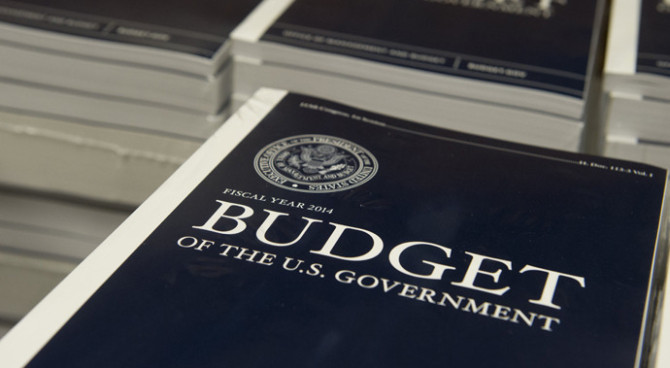Antitrust action would sap the benefits top companies have brought to consumers and ordinary investors.
Despite the many troubles of 2020, Congress has made more time than ever this year to target a different purported threat: America’s tech giants. This month the Senate Antitrust Subcommittee will hold the latest of several recent hearings on the issue, with one on Google’s online advertising influence on Tuesday and another on general antitrust enforcement Sept. 30. Yet after all this sound and fury, will Congress actually dismember the goose that laid the golden egg? Antitrust action against leading U.S. tech companies would shrink American dominance of the world’s fastest-growing industry and imperil the enormous buildup of stock equity that secures the retirements of some 78 million American workers.
Progressives want to use the antitrust laws to break up big tech companies because they believe that bigness is bad and leads to a host of other evils, including malign political influence. Conservatives want to use antitrust as a club to get social-media companies to curb their alleged political bias.
While there is a long and rich history of using antitrust laws to try to implement policies that proponents can’t enact into law, both parties would be wise to focus on consumer welfare, which has defined recent antitrust jurisprudence. No one can seriously challenge the hard evidence that big tech companies have delivered enormous consumer benefits. You don’t have to look any further than online shopping, smartphones and social networking.
Amazon got its start in 1994 selling books, then music and DVDs. Apple started selling music through iTunes in 2003. The Bureau of Labor Statistics started calculating consumer price indexes for recreational books, recorded movies and music in 1997. From December 1997 through December 2019, the price of recreational books fell by 4%, movies fell by 19%, and recorded music fell by 64%. Over the same period general prices increased by 59%.
BLS data show the price of smartphones fell by even more. RIM introduced the BlackBerry in 1999, and Apple introduced the iPhone eight years later. The BLS doesn’t report a separate CPI category for smartphones, but the cost of cellphones accounts for half of the CPI component for telephone hardware, calculators, and other consumer information items. Prices for this category of consumer spending have fallen by 85% since 1997 and by 59% since 2007.
Even these stunning price reductions understate the actual price decline and consumer benefits of new tech products. Since the cellphone didn’t enter the CPI until 14 years after it was introduced, the index never counted the initial 75% drop in cellphone prices that occurred before the inclusion of the cellphone in the CPI. Nor did the BLS start adjusting the CPI for changes in the quality of smartphones until 2018—missing the extraordinary improvements that occurred in early smartphones. A 2019 National Bureau of Economic Research study conducted in the Netherlands estimated the value of one quality improvement, the cellphone camera, at more than €818—more than 10 times the cost of adding the camera to the phone.
The NBER study also estimated that consumers place significant value on social media and apps. If the value to consumers of Facebook use was included in gross domestic product, the study concludes that annual real GDP growth would have been about 0.1 percentage point greater each year from 2003-17. The study’s authors also that found that the value consumers attach to WhatsApp, Instagram and map apps, which aren’t counted in measures of consumer prices or income, would give a measurable boost to GDP.
Many of these web-platform companies, including Google, make their money through advertising. The BLS started to include online advertising prices in its producer-price index in December 2009. Between December 2009 and December 2019, the price of search and text advertising fell by 52%, and the price of online display advertising fell by 24%. With the price of ads plummeting, it is hard to argue advertisers are getting squeezed to subsidize freebies for consumers.
There are striking similarities between today’s tech giants and the businesses that were accused of being monopolies during the Progressive Era. In the decade before the Sherman Antitrust Act was passed in 1890, the real price of pig iron fell by 21%, the wholesale price of sugar fell by 22%, and the price of copper fell by 10%. Inflation-adjusted prices of iron and copper actually rose in the 10 years after producers in those industries were threatened with antitrust enforcement, while the price of sugar fell at a much slower rate than before.
Before they dismember the goose, lawmakers should look not only at the benefits big tech has provided to consumers but also at the fact that U.S. tech companies’ world-wide lead depends on policies that encourage innovation and don’t punish companies simply for growing large. Fourteen of the largest 20 tech companies are based in the U.S. Apple, Microsoft, Amazon, Alphabet (parent of Google) and Facebook are the five largest tech companies in the world, with a market capitalization of $6.9 trillion. Public and private pension funds, 401(k)s, individual retirement accounts and insurance reserves guaranteeing death benefits and annuities own more than 70% of the stocks of these companies. Mandatory breakups or other draconian antitrust policies, especially when foreign competition is growing, would put at risk some $4.8 trillion of Americans’ retirement savings.
Mr. Gramm is a former chairman of the Senate Banking Committee. Mr. Ellig, a former chief economist at the Federal Communications Commission, is a research professor at the George Washington University Regulatory Studies Center. Mike Solon contributed to this op-ed.



